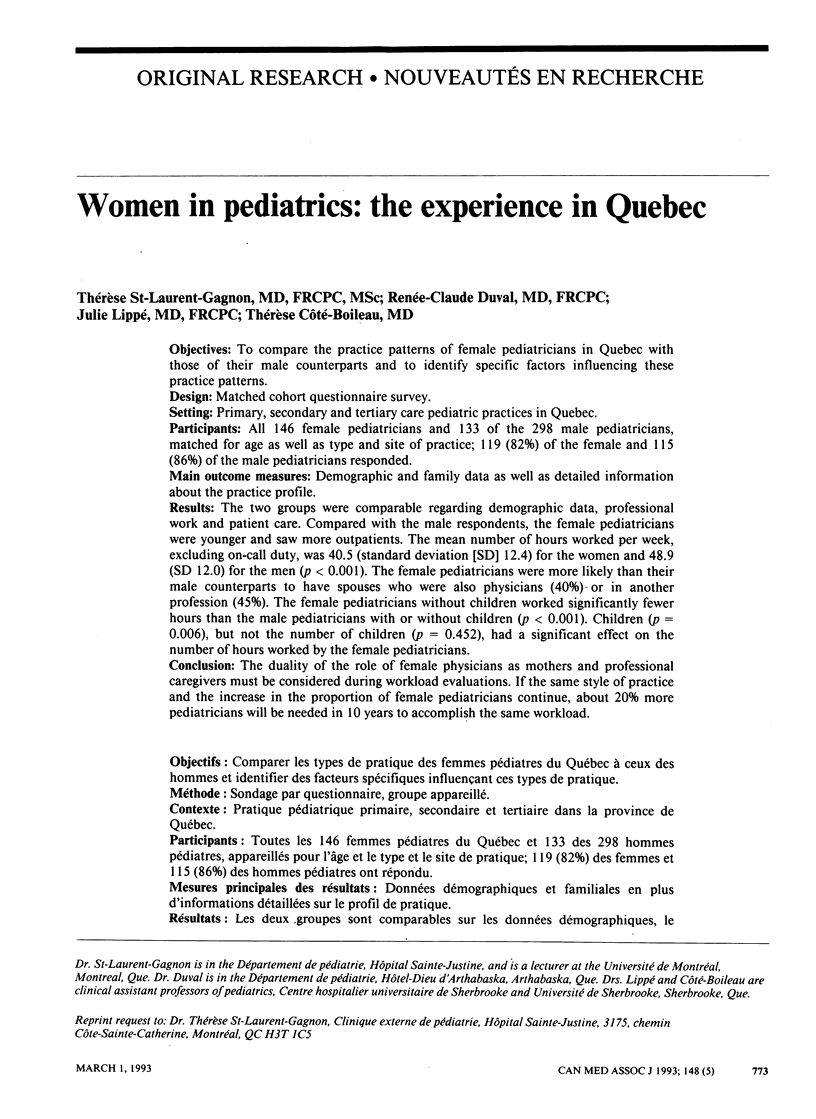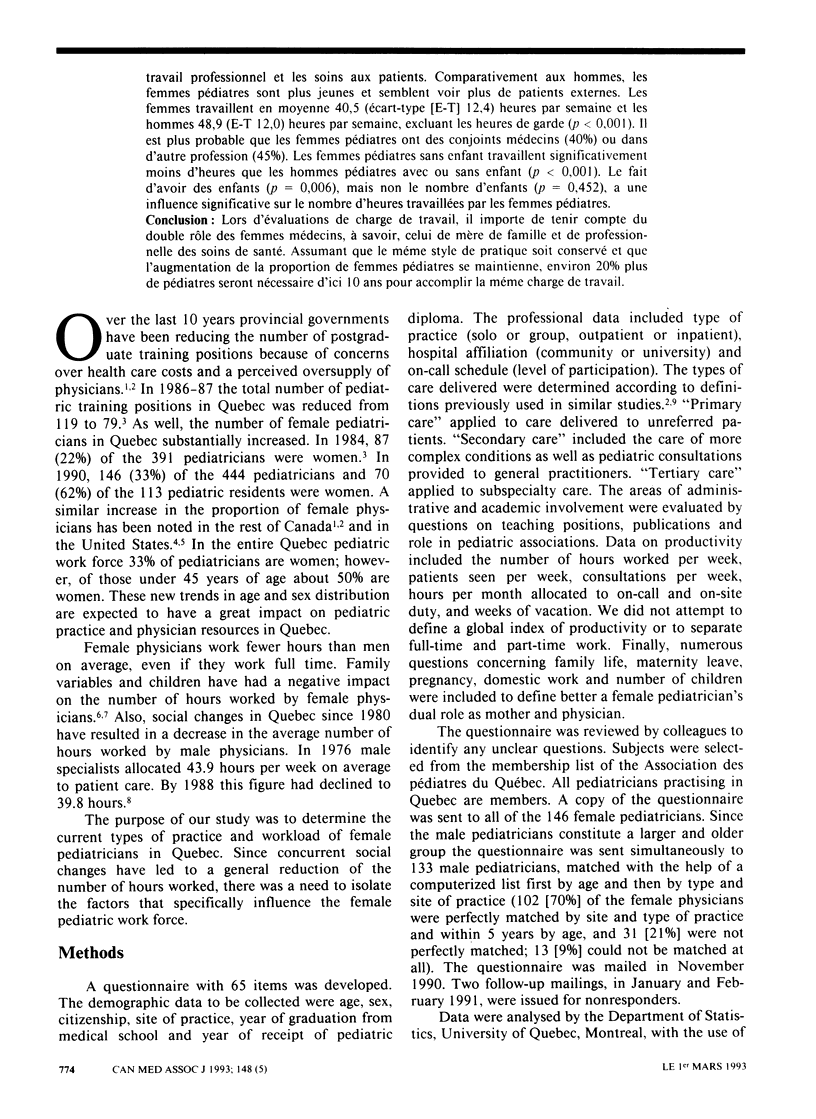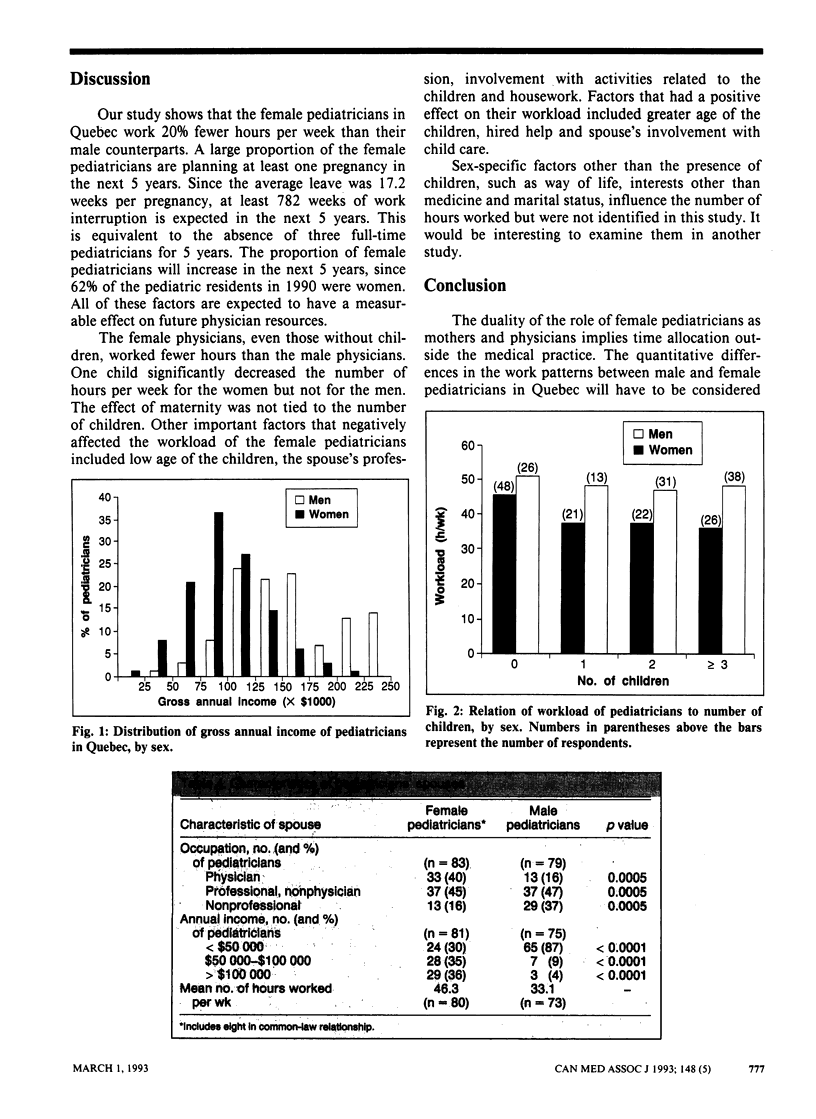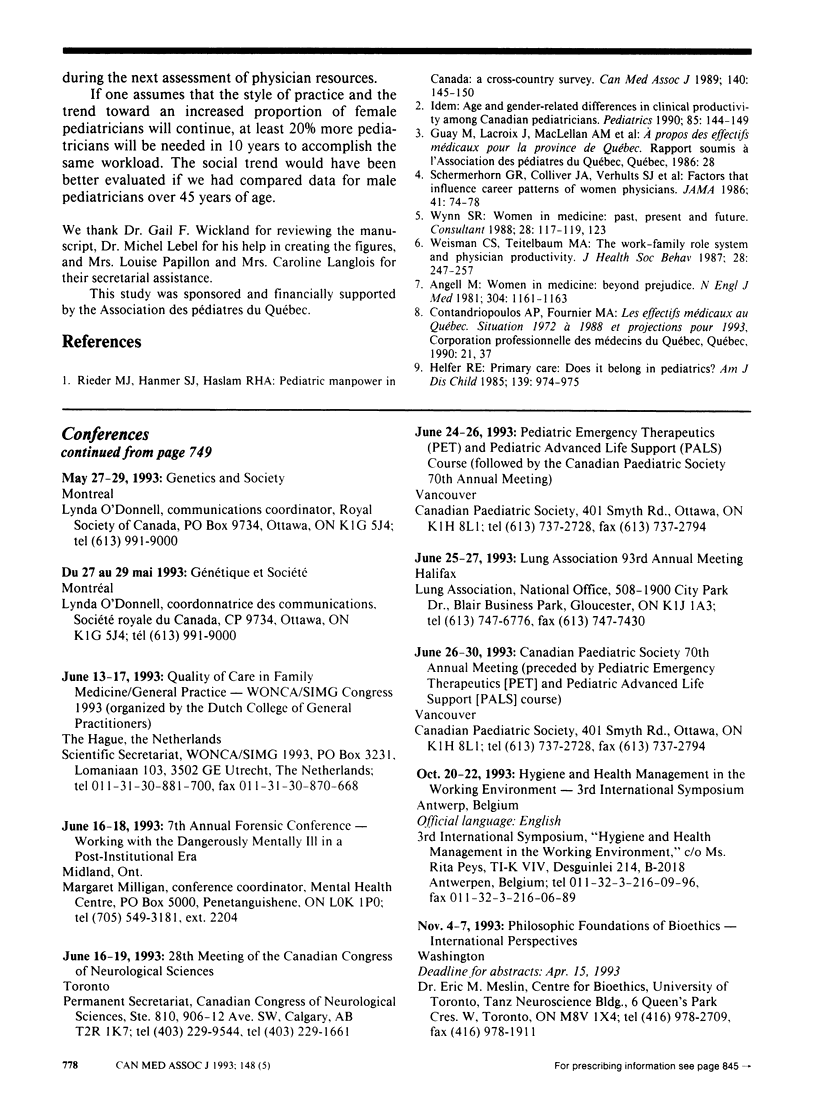Abstract
OBJECTIVES: To compare the practice patterns of female pediatricians in Quebec with those of their male counterparts and to identify specific factors influencing these practice patterns. DESIGN: Matched cohort questionnaire survey. SETTING: Primary, secondary and tertiary care pediatric practices in Quebec. PARTICIPANTS: All 146 female pediatricians and 133 of the 298 male pediatricians, matched for age as well as type and site of practice; 119 (82%) of the female and 115 (86%) of the male pediatricians responded. MAIN OUTCOME MEASURES: Demographic and family data as well as detailed information about the practice profile. RESULTS: The two groups were comparable regarding demographic data, professional work and patient care. Compared with the male respondents, the female pediatricians were younger and saw more outpatients. The mean number of hours worked per week, excluding on-call duty, was 40.5 (standard deviation [SD] 12.4) for the women and 48.9 (SD 12.0) for the men (p < 0.001). The female pediatricians were more likely than their male counterparts to have spouses who were also physicians (40%) or in another profession (45%). The female pediatricians without children worked significantly fewer hours than the male pediatricians with or without children (p < 0.001). Children (p = 0.006), but not the number of children (p = 0.452), had a significant effect on the number of hours worked by the female pediatricians. CONCLUSION: The duality of the role of female physicians as mothers and professional caregivers must be considered during workload evaluations. If the same style of practice and the increase in the proportion of female pediatricians continue, about 20% more pediatricians will be needed in 10 years to accomplish the same workload.
Full text
PDF





Selected References
These references are in PubMed. This may not be the complete list of references from this article.
- Angell M. Women in medicine: beyond prejudice. N Engl J Med. 1981 May 7;304(19):1161–1162. doi: 10.1056/NEJM198105073041908. [DOI] [PubMed] [Google Scholar]
- Helfer R. E. Primary care. Does it belong in pediatrics? Am J Dis Child. 1985 Oct;139(10):974–975. doi: 10.1001/archpedi.1985.02140120020018. [DOI] [PubMed] [Google Scholar]
- Rieder M. J., Hanmer S. J., Haslam R. H. Pediatric manpower in Canada: a cross-country survey. CMAJ. 1989 Jan 15;140(2):145–150. [PMC free article] [PubMed] [Google Scholar]
- Schermerhorn G. R., Colliver J. A., Verhulst S. J., Schmidt E. L. Factors that influence career patterns of women physicians. J Am Med Womens Assoc. 1986 May-Jun;41(3):74–78. [PubMed] [Google Scholar]
- Weisman C. S., Teitelbaum M. A. The work-family role system and physician productivity. J Health Soc Behav. 1987 Sep;28(3):247–257. [PubMed] [Google Scholar]
- Wynn S. R. Women in medicine: past, present, and future. Consultant. 1988 May;28(5):117-9, 123. [PubMed] [Google Scholar]


